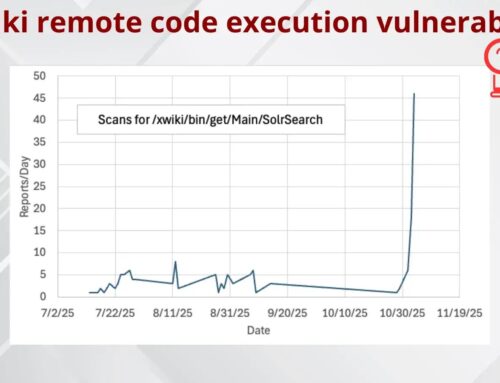
5 Common Back-to-School Online Scams Powered Using AI and How to Avoid Them
As the academic year commences, students, parents, and educational institutions face a new, insidious threat: Artificial Intelligence (AI)-powered online scams. Cybercriminals are increasingly leveraging sophisticated AI techniques, including machine learning algorithms, natural language processing (NLP), and deepfake technology, to craft highly convincing and difficult-to-detect attacks. These advanced tactics make traditional scam detection methods less effective, posing a significant risk to personal and financial security within the education sector.
This article, penned by a cybersecurity analyst, dissects five common back-to-school online scams enhanced by AI and provides actionable strategies to protect yourself and your data. Understanding these evolving threats is the first step in building a robust defense against digital deception.
The AI Advantage in Online Scams
Traditional phishing and social engineering attacks often relied on basic templates, grammatical errors, and obvious red flags. However, AI, particularly advancements in NLP and generative AI, has dramatically elevated the sophistication of these schemes. AI can:
- Generate highly convincing, contextually relevant email and text messages that mimic legitimate communications, eliminating spelling and grammar errors often associated with scams.
- Automate the creation of personalized phishing content at scale, tailoring messages to individual targets based on publicly available information.
- Produce realistic deepfake audio and video to impersonate individuals, such as school administrators or family members, for voice phishing (vishing) or video conferencing scams.
- Quickly adapt to new detection methods, making scam identification an ongoing challenge.
1. AI-Enhanced Phishing and Spear-Phishing Attacks
Description: Phishing has evolved beyond generic emails. AI allows attackers to craft highly personalized and grammatically flawless emails or messages that appear to originate from legitimate sources like school financial aid offices, student loan providers, or university IT departments. These messages often create a sense of urgency, requesting immediate action, such as updating personal information or clicking a malicious link to “verify” enrollment. Spear-phishing, a more targeted variant, leverages AI to analyze publicly available data to tailor messages with specific details, making them incredibly convincing.
Example Scenario: A parent receives an email, seemingly from the university’s bursar’s office, stating there’s an “urgent discrepancy” with their child’s tuition payment and directing them to a convincing, but fake, login page to “resolve” the issue. The email’s tone, wording, and design are impeccable, thanks to AI-driven generation.
Remediation Actions:
- Verify Sender Identity: Always scrutinize the sender’s email address. Hover over links to reveal the true URL before clicking.
- Never Click Suspicious Links: Instead of clicking links in an email, navigate directly to the official website of the institution or service by typing the URL into your browser.
- Multi-Factor Authentication (MFA): Enable MFA on all educational and financial accounts. Even if credentials are compromised, MFA provides an additional layer of security.
- Educate Yourself: Be aware of common phishing tactics. Resources like the Anti-Phishing Working Group (APWG) offer valuable insights.
2. Deepfake Impersonation Scams
Description: Deepfake technology, powered by generative adversarial networks (GANs), allows attackers to create highly realistic synthetic media – audio or video – that realistically portrays someone saying or doing something they never did. In a back-to-school context, this could involve attackers impersonating school officials, professors, or even family members to solicit money or sensitive information. This is particularly dangerous in vishing (voice phishing) or video conferencing scams.
Example Scenario: A student receives a video call that appears to be from their university dean, warning of a critical, time-sensitive issue that requires an immediate wire transfer for “emergency equipment” or “unpaid fees.” The deepfake video convincingly mimics the dean’s voice and appearance.
Remediation Actions:
- Verify Out-of-Band: If someone requests money or sensitive information via an unexpected call or video, always verify the request through an alternative, known communication channel (e.g., call them back on their official, published phone number, or send a text message to their known number).
- Question Unusual Requests: Be skeptical of any urgent demands for money, particularly those instructing you to use untraceable payment methods. Official institutions typically do not request payments via gift cards or unusual wire transfers.
- Awareness Training: Familiarize yourself with the concept of deepfakes and their potential use in scams.
3. AI-Driven Fake Scholarship and Loan Offers
Description: Cybercriminals leverage AI to generate high-volume, personalized fake scholarship or loan offers that appear incredibly legitimate. These scams often promise guaranteed funding but require an upfront “processing fee,” “tax payment,” or personal banking information. The AI ensures the offer letters are well-written, tailored to the student’s profile (gleaned from public records), and appear to come from reputable, but fictitious, organizations.
Example Scenario: A high school senior receives an email about a previously unknown “National Collegiate Achievement Grant” for which they’ve been “pre-selected.” The email, generated with AI, perfectly matches their academic interests and background, but requires a $50 “application fee” via an unsecured portal.
Remediation Actions:
- Never Pay for Scholarships/Loans: Legitimate scholarships and financial aid programs do not ask for upfront fees.
- Research Thoroughly: Verify the legitimacy of any scholarship or loan program through official educational institutions or government websites.
- Protect Personal Information: Be extremely cautious about sharing sensitive data like Social Security numbers or bank account details with unverified entities.
4. AI-Powered Technical Support Scams
Description: As students rely heavily on technology for remote learning, AI-powered tech support scams are on the rise. Attackers use AI to generate highly convincing pop-up messages or automated calls claiming to be from a university’s IT department or a common software provider (e.g., Microsoft, Apple). These alerts often state that your computer has a virus or a security issue and prompt you to call a fake support number. Once connected, the scammer uses social engineering and AI-generated scripts to persuade you to grant remote access or purchase unnecessary software/services.
Example Scenario: While browsing a university’s online portal, a student’s screen is suddenly filled with a pop-up warning, complete with alarming sound effects, claiming a “critical security breach” has occurred (simulated with AI-generated notifications). It provides a toll-free number for “university IT immediate assistance.” Upon calling, the “technician” uses AI-powered scripts to sound authoritative and insists on remote access to “fix” the non-existent issue.
Remediation Actions:
- Be Skeptical of Pop-Ups: Legitimate tech support will not initiate contact via unsolicited pop-up warnings or automated calls.
- Never Grant Remote Access: Do not allow unknown individuals remote access to your computer.
- Verify Contact Information: Always use official contact information for university IT support or software vendors.
- Use Antivirus Software: Maintain up-to-date antivirus and anti-malware software.
5. AI-Generated “Emergency” Scams (Grandparent Scams)
Description: While not new, AI has significantly enhanced “grandparent” or “emergency” scams. Attackers use AI to generate highly convincing voice clones of children or grandchildren claiming to be in immediate distress (e.g., arrested, hospitalized, needing urgent money) and requiring immediate wire transfers or gift card purchases. The AI ensures the voice sounds authentic, overcoming previous limitations of these scams.
Example Scenario: A grandparent receives a frantic call, seemingly from their grandchild, whose voice sounds identical to the real one due to AI deepfake audio. The “grandchild” claims to be in a foreign country, arrested, and desperately needs money for bail, insisting not to tell their parents for fear of repercussions.
Remediation Actions:
- Verify Identity Immediately: If you receive an unexpected call claiming to be a loved one in distress, try to contact that person directly on their known phone number.
- Ask Verification Questions: Ask questions only the genuine person would know the answer to.
- Discuss with Family: Establish a family plan for emergency communication and discuss potential scam scenarios.
Remediation Actions for Students, Parents, and Institutions
Protecting against AI-powered scams requires a multi-layered approach:
- Cybersecurity Education: Regular training and awareness programs are crucial. Institutions should educate students and staff on current scam trends, including AI enhancements.
- Strong Authentication: Implement and enforce Multi-Factor Authentication (MFA/2FA) across all academic and financial platforms.
- Phishing Simulation: For institutions, regular phishing simulations can help identify vulnerabilities and improve user awareness.
- Software Updates: Keep operating systems, browsers, and applications updated to patch known vulnerabilities.
- Robust Security Software: Utilize reputable antivirus, anti-malware, and email filtering solutions.
- Data Protection: Be judicious about the personal information shared online, as this data can be leveraged by AI in targeted attacks.
- Report Incidents: Report any suspected scams to the relevant authorities (e.g., school IT, law enforcement, FTC) and your financial institution.
The evolving landscape of cyber threats, particularly those bolstered by artificial intelligence, demands heightened vigilance. As students return to their studies, recognizing the sophisticated tactics employed by cybercriminals is paramount. By adhering to strong cybersecurity practices and maintaining a healthy skepticism towards unsolicited communications, we can collectively build a more secure digital environment for the academic community. Stay informed, stay vigilant, and stay secure.





